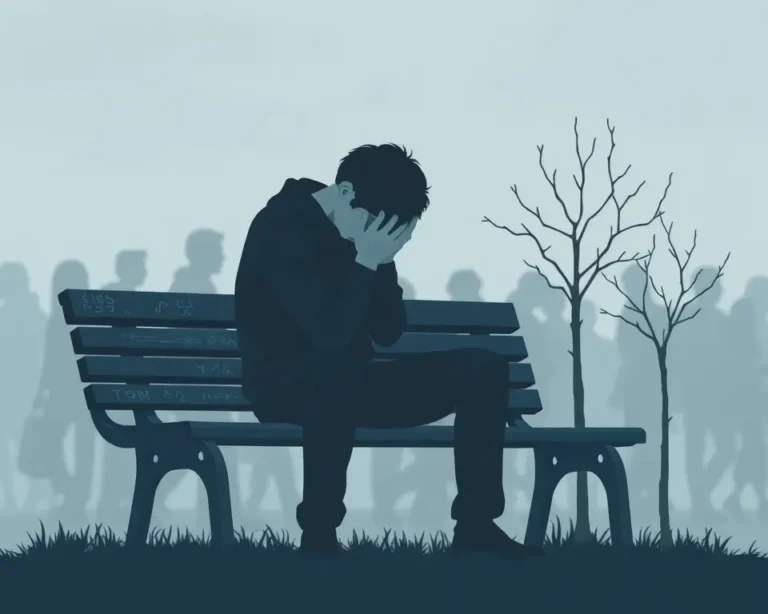Mental health is a critical component of overall well-being, yet a staggering number of people across the globe are unable to access the treatment and support they need. This global mental health crisis affects individuals in all countries, regardless of their economic status, and has far-reaching consequences for individuals, families, and societies.
The Sheer Scale of Untreated Mental Illness
The statistics paint a stark picture. In 2019, nearly 1 billion people worldwide were living with a mental disorder, with anxiety and depression being the most prevalent. The COVID-19 pandemic has only exacerbated the situation, leading to a significant increase in the number of people experiencing mental health challenges. Despite the widespread need, a significant portion of the global population – as high as 70% in some regions – does not receive the mental health care they require. The World Health Organization (WHO) estimates that one in four people will be affected by a mental illness at some point in their lives.
Key Statistics to Consider:
- 970 million people globally lived with a mental disorder in 2019.
- Depression affects approximately 4% of the global population.
- Suicide is the fourth leading cause of death among 15 to 29-year-olds.
- 70% of people with mental health conditions do not receive the care they need.
Barriers to Accessing Mental Health Care
Numerous obstacles prevent individuals from accessing mental health treatment. These barriers exist on multiple levels, ranging from systemic issues within healthcare systems to individual challenges related to stigma and awareness.
Systemic Barriers
- Lack of Resources: Many low- and middle-income countries (LMICs) face a severe shortage of resources for mental health services. This includes a lack of funding, infrastructure, and essential medications.
- Shortage of Trained Professionals: There is a significant shortage of trained mental health professionals, including psychiatrists, psychologists, and psychiatric nurses, particularly in LMICs. For example, in Ethiopia, there are only 110 psychiatrists for a population of 112 million.
- Fragmented Service Delivery: Mental health services are often fragmented and poorly integrated with other healthcare services, making it difficult for individuals to navigate the system and receive coordinated care.
- Lack of Policy and Integration: Many countries lack comprehensive mental health policies and plans, hindering the development and implementation of effective services.
Individual Barriers
- Stigma: Stigma surrounding mental illness remains a pervasive barrier, preventing individuals from seeking help due to fear of judgment, discrimination, and social exclusion. Almost 9 out of 10 people with a mental condition experience stigma and discrimination.
- Low Perceived Need: Some individuals may not recognize that they have a mental health condition or may not believe that treatment is necessary or effective.
- Attitudinal Barriers: Negative attitudes towards mental health treatment, such as a belief that it is not helpful or that it is a sign of weakness, can also prevent people from seeking care.
- Accessibility: Even when services are available, they may not be accessible due to geographical barriers, transportation difficulties, or financial constraints.
- Affordability: The cost of mental health treatment, including therapy and medication, can be a significant barrier for many individuals, particularly those without adequate health insurance coverage.
The Impact of Untreated Mental Illness
The consequences of untreated mental illness are far-reaching and can have a devastating impact on individuals, families, and communities.
Individual Impact
- Reduced Quality of Life: Mental health conditions can significantly impair an individual’s ability to function in daily life, affecting their relationships, work, and overall well-being.
- Increased Risk of Suicide: Mental illness is a major risk factor for suicide. Approximately 700,000 people die by suicide each year.
- Physical Health Problems: Mental health conditions are often associated with increased risk of chronic physical health problems, such as cardiovascular disease, diabetes, and obesity.
- Substance Abuse: Individuals with mental health disorders are more likely to develop substance abuse problems.
Societal Impact
- Economic Costs: Mental illness can lead to significant economic costs due to lost productivity, increased healthcare expenditures, and disability payments.
- Social Costs: Untreated mental illness can contribute to social problems such as homelessness, crime, and violence.
- Burden on Healthcare Systems: The lack of adequate mental health services places a significant burden on healthcare systems, as individuals with untreated conditions often require more intensive and costly care.
Addressing the Treatment Gap: Strategies and Solutions
Bridging the mental health treatment gap requires a multi-faceted approach that addresses both systemic and individual barriers.
Strengthening Healthcare Systems
- Increased Investment: Governments and international organizations need to increase investment in mental health services, particularly in LMICs.
- Integration of Mental Health into Primary Care: Integrating mental health services into primary care settings can improve access and reduce stigma.
- Task-Sharing: Training and utilizing lay health workers to deliver basic mental health interventions can help to address the shortage of trained professionals.
- Policy Development: Governments should develop and implement comprehensive mental health policies and plans that prioritize prevention, early intervention, and access to quality care.
Reducing Stigma and Raising Awareness
- Public Education Campaigns: Launching public education campaigns to raise awareness about mental health and reduce stigma can encourage individuals to seek help.
- Community-Based Programs: Implementing community-based mental health programs can provide support and resources to individuals and families affected by mental illness.
- Promoting Positive Portrayals: Encouraging positive portrayals of mental health in the media can help to challenge negative stereotypes and promote understanding.
Innovative Approaches to Treatment
- Telehealth and Digital Mental Health: Utilizing technology to deliver mental health services remotely can improve access, particularly for individuals in rural or underserved areas.
- Virtual Reality (VR) Therapy: VR therapies offer controlled, immersive environments that can simulate real-world scenarios, helping patients develop coping mechanisms in a safe and manageable setting.
- AI-Powered Diagnostics: Artificial intelligence (AI) can be used to enhance the precision and timeliness of mental health diagnoses, leading to earlier intervention.
The WHO Special Initiative for Mental Health
The WHO has launched a Special Initiative for Mental Health designed to address the service and treatment gap and move people with these conditions towards universal health coverage. The initiative is being implemented in nine countries across WHO‘s six Regions: Argentina, Bangladesh, Ghana, Jordan, Nepal, Paraguay, Philippines, Ukraine, and Zimbabwe. As of the end of 2023, more than 52 million people now have access to newly available services at the local level.
Conclusion: A Call to Action
The global mental health treatment gap is a significant challenge that demands urgent attention. By addressing the systemic and individual barriers to care, investing in innovative approaches to treatment, and reducing stigma, we can work towards a future where everyone has access to the mental health support they need to live healthy and fulfilling lives. The time for action is now.







